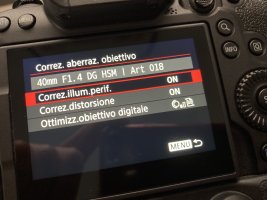If we ignore the EF600 and EF400 that were introduced together with the EOS-R, the RF lenses have the following features that EF lenses don't have:
- Faster communication, including sharing of sensor (e.g. accelerometer/gyro) data with the body
- Storing the aberration and distortion parameters in the lens instead of the body
The first one isn't useful for CN-R, since they lack both AF and IS, but the 2nd item is a much bigger deal. With EF lenses you have to load the correction data into the body yourself, RF lenses do that for you. As we've seen, for lenses that distort things in a novel way (24-105STM, 24-240) a firmware update for the body is needed to handle those parameters.
I suspect the big thing for video users is focus breathing correction, lenses can be much cheaper if the body handles focus breathing.
And if you're an EF-M user: Yes, EF-M supported in-lens storage of correction parameters first. And even better: the Sigma EF-M lenses provide proper correction info, so no weird onion rings in the EVF or video footage!

